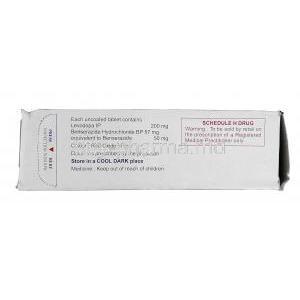Levodopa
Uses
Levodopa is used in the treatment of Parkinson's disease or shaking palsy.
How it Works
Levodopa works by improving muscle control. Levodopa is converted to dopamine, a chemical messenger which is needed to control the movement through transmission of signals in the brain. Therefore levodopa allows more normal movements of the body.
Common Side effects
Some of the potential side effects of Levodopa can include the symptoms below;
Nausea,
Vomiting,
Dizziness,
Loss of appetite,
Orthostatic hypotension,
Movement disorder
Benserazide
Uses
Benserazide is used in the treatment of parkinson's disease and the symptoms it may cause
How it Works
Benserazide is always given with levodopa. Benserazide works by preventing levodopa from being broken down before it reaches the brain. This allows for a lower dose of levodopa to be administered, which causes less nausea and vomiting. Once in the body, levodopa is converted into dopamine which helps to restore the level of dopamine in the damaged area of the brain which then helps to relieve the symptoms of Parkinson's disease.
Common Side effects
Some of the potential side effects of Benserazide can include the symptoms below;
Nausea,
Postural hypotension,
Psychiatric disturbances,
Altered libido,
Anemia,
Drowsiness,
Fluctuating disability,
Abnormal heart rhythm,
Involuntary movements,
Hallucination,
Decreased blood pressure,
Decreased white blood cell count,
Increased liver enzymes,
Reduced blood platelets,
Vomiting











